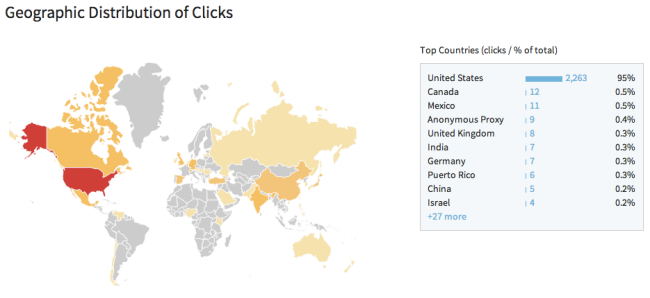The Next Big Thing in Social Media: Context.
As I write this post, I hold a 1-month-old infant in my arms. He is asleep. After two baby boys who hate being swaddled and love being awake and aware of everything happening around them, I find great pride in this accomplishment. He has been struggling with acid reflux over the past few weeks, which means that sleep has been even harder to come by, as has peace of mind us for us as parents since he is often in pain when he is awake. But right now, at 12:41 on a Sunday night, all is well and the only sound in the apartment is the whir of the AC window unit and the clacking of the keyboard as I type with one hand.
I write this to give a little bit of context behind my post – what is prompting what I am about to say, and perhaps what is putting me in a sentimental mindset. I am incredibly grateful for the technology that pervades our lives – a camera with virtually limitless capacity to take pictures in our pocket at all times, social networks that connect us with friends, family, coworkers, etc. I would be willing to bet that my parents took a total of maybe 500 pictures of me my entire life to date, mainly of vacations, birthdays and holidays. As I look at the iPhoto library on our home computer, I see more than 7,700 pictures uploaded from my phone alone from the time that my first son was born 27 months ago. Those pictures are of everything. Today alone I took 25 pictures and 4 videos documenting the bike ride he and I took to the Union Square farmer’s market, visit to the Highline to splash in the water and eat our blackberries, and afternoon at the Natural History Museum where he hand-fed an overly friendly squirrel a Shake Shack french fry.
Of these 7,700 pictures, I have shared about 200 on Instagram, on each including about a 10-15 word caption, sometimes a location, rarely a hashtag (hashtags were SOOO 2013) and occasionally tagging friends/family.
All of this combined will serve as a good way of documenting my son’s life, at least in pictures and video. However, one thing that it misses, almost altogether: context. And I think that people will soon start to realize that almost all of social media is missing it, and will find a way to begin adding it in. It will take what we call social media currently to something that will have more purpose and permanence, which will give it staying power. Without it, people will migrate on to the next big thing when it comes along. Context will give the content we are posting the gravitas and sense of personal investment required to keep our long-term attention.
When my son looks back in 20 years from now, I want to be able to easily give him the context behind the picture of him feeding a squirrel a french fry – that he was fascinated by squirrels at the age of two and that he would say “hi squirrel” to every squirrel he saw. That he lived in an apartment where he couldn’t have a pet of his own, so the squirrels of Central Park were kind of his adopted pets, usually only observed from afar. That when he saw rats scampering through garbage on the subway tracks, he’d call them squirrels. (We haven’t corrected him, because I feel it reflects the optimism of youth what kind of parents would we be to take away from him?) That he was finding himself into a forced independance now that a baby brother was stealing the majority share of his parents’ attention, an independance that found him with new confidence. That we were there, eating Shake Shack fries, with old friends from Seattle, where my wife and I met, fell in love, got married. All of this adds so much to the experience that will be lost if it is not somehow captured.
And I think that’s the next big thing in Social – capturing that context. I think that as the Facebook generation starts to look back at their lives, they will see them as lacking substance. I think part of where they find this substance is in sharing feel-good articles, thus the emergence of platforms such as Good.is. But I think we will also look to add a level of context to give it substance. I think it may be a platform (or an extension to existing platforms) where people will be encouraged to write and share longer-form content, or adding personal notes/better tagging/organization to the content that is being shared. This may be wishful thinking, but I think that it is part of a social media backlash that is bound to start sometime.
#theoandbeau and The Land of Nod

This month’s Land of Nod cover is an adorable picture of a boy wearing a superhero mask snuggling up with a dog. As the father of a 2-year-old boy, who is starting to develop a unique personality and take on life (including a cautious love for dogs), I really loved it. Turns out that the boy and dog featured are Instagram celebrities Theo and Beau, of @mommasgonecity. The Land of Nod reached out to them after seeing their social media fame. A bit more on the collaboration in a blog post on her site.
One of the things that I sometimes regret about advertising generally is that it features fake people doing take things. If you look at something like an ad for a menswear brand and you see a man with impossibly coiffed hair standing on a sailboat in a full tux, it does sells the lifestyle and product. What it doesn’t do is tell an authentic story. The Land of Nod cover tells a true, authentic story – the true love of a boy for his dog. It’s the kind of context and gravity that you simply can’t script or cast. This is why I think that social media can have such a positive impact on the mainstream advertising world (even as they converge).
Social media can become a silent casting call for brands looking to tell their story. You can find people living the lives that you want to depict in ads (and catalogs), and they often come with a built-in network of avid followers to help spread your reach. Followers also help a brand understand the audience segment that a given person/personality resonate with (to the extent that those followers self-identify – typically enough to get a sense of age, gender, location).
The Land of Nod is an excellent example of how brands should would with social media influencers, and not only on social. They have clearly made an investment in the value of social across their organization, even to the point of giving prime real estate – the front cover of their catalog – to developing relationships with those influencers and their fans. They are very active in doing nursery makeovers for top mom bloggers, which I’m sure has required a sizeable financial investment from the company. Based on how they are continuing with the strategy, my bet is that it is paying dividends.











leave a comment